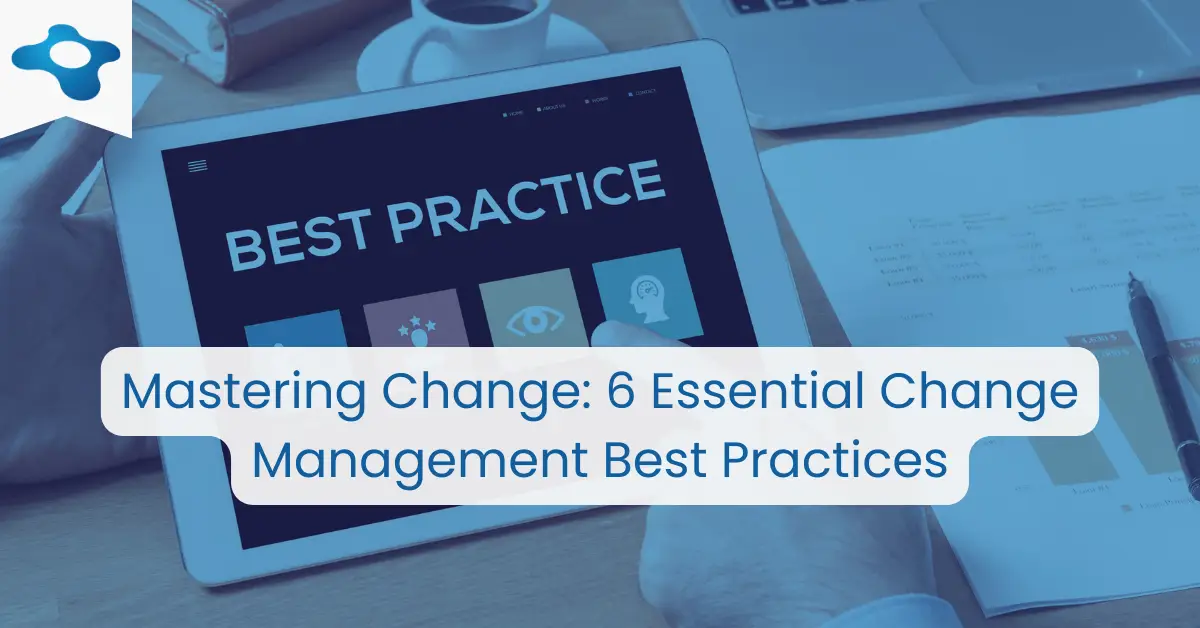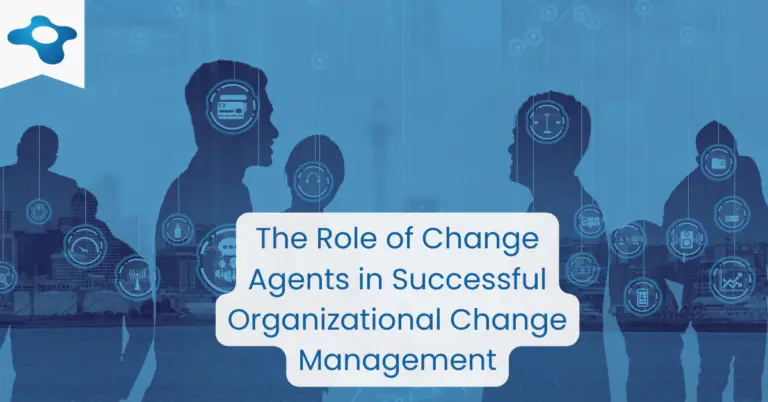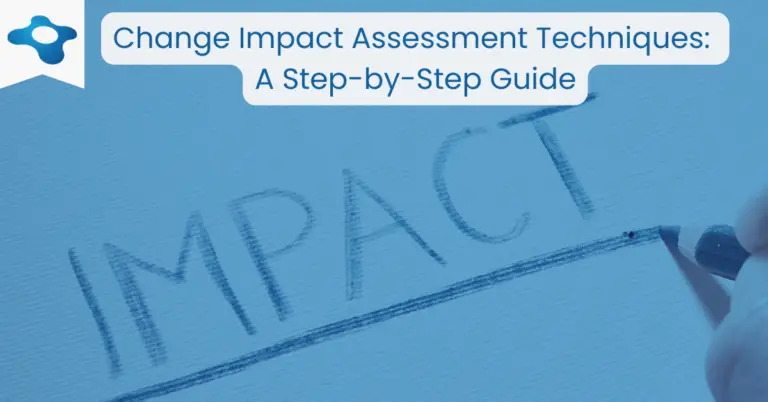Key Takeaways
- Best practices are guidelines or standards known to yield positive outcomes when followed.
- Academics, research organizations, consulting firms, and vendors often offer their own versions of change management best practices.
- Changemethod’s meta-study of change management best practices condensed them into six key areas: shared change purpose, visible change leadership, smart engagement and communication, strong individual performance, supportive organization and culture and meaningful change measurement.
In today’s rapidly evolving business landscape, organizations must continually adapt to remain competitive. Technological shifts, economic fluctuations, and emerging markets necessitate effective change management to guide companies through complex transformations.
One way to ensure organizations maintain their competitive edge is by adhering to practical and proven best practices. By drawing lessons from the countless projects, successes, and failures that have come before, we can distill invaluable insights and timeless best practices.
Synthesizing findings from research organizations, consulting firms, and business frameworks, we have identified six core areas of change management best practices. Skillful implementation of these practices results in more agile and adaptive organizations.
Shared Change Purpose
A shared change purpose lays the foundation for successful change management by establishing a clear and compelling vision of the desired future state.

This unified understanding drives alignment, commitment and coordinated action throughout the organization. The following processes are essential for creating a shared change purpose:
Define Future State
Benefits of defining the future state:
A clearly articulated future state provides a sense of direction and motivation, ensuring that all stakeholders are working toward common goals. It also enables better decision-making, as decisions can be evaluated against the desired outcomes.
Risks of ignoring the future state:
Without a well-defined future state, the organization may face misalignment, confusion, and resistance to change. Stakeholders may struggle to understand the purpose of the change, leading to a lack of commitment and engagement.
Steps to define the future state:
- Identify change imperatives
- Agree change vision
- Define future state
- Identify key change interventions
Discover more about defining your organization’s future state here.
Define Change Governance
Benefits of defining change governance:
Establishing change governance structures ensures accountability, responsibility, and decision-making authority are clear throughout the change process. It promotes transparency, facilitates communication, and enables efficient management of resources.
Risks of ignoring change governance:
A lack of change governance can lead to confusion, delays, and conflict, as stakeholders may be unsure of their roles, responsibilities, and decision-making authority. Inefficient resource allocation and poor communication can hinder progress and undermine change success.
Steps to define change governance:
- Understand existing governance structures
- Define change team and governance structure
- Define change agent network
- Validate and communicate change governance
Discover more about defining change governance for your project or program here.
Develop Change Strategy
Benefits of developing a change strategy:
A well-crafted change strategy ensures that the organization approaches change in a structured, coherent, and effective manner. It helps align the various change initiatives and provides a clear roadmap for achieving the desired future state.
Risks of ignoring change strategy:
Without a change strategy, the organization may face disjointed efforts, wasted resources, and a lack of direction. Stakeholders might struggle to understand the rationale behind individual change initiatives, leading to resistance and disengagement.
Steps to develop a change strategy:
- Review existing business analysis
- Evaluate against future state definition
- Develop change business case
- Agree change management strategy
Learn more about developing a change management strategy here.
Change Impact Assessment
Benefits of conducting a change impact assessment:
A thorough change impact assessment helps the organization understand the extent and implications of the proposed change. It enables better planning, resource allocation, and risk mitigation, ultimately increasing the likelihood of successful change implementation.
Risks of ignoring change impact assessment:
Failing to assess change impacts may result in unforeseen consequences, inadequate resource allocation, and poor risk management. It can also contribute to stakeholder resistance, as potential negative outcomes may not have been addressed proactively.
Steps to conduct a change impact assessment:
- Define assessment approach
- Conduct impact assessment
- Analyze and report impact assessment
- Agree key change interventions
Learn more about developing a change impact assessment here.
Change Management Plan
Benefits of creating a change management plan:
A comprehensive change management plan provides a clear roadmap for managing and implementing change. It ensures that all change activities are coordinated, monitored, and adjusted as needed, increasing the likelihood of successful change outcomes.
Risks of ignoring change management planning:
Without a change management plan, the organization may face disorganized and ineffective change efforts, resulting in wasted resources, delays, and resistance. Stakeholders may become disengaged and frustrated, undermining the change process.
Steps to create a change management plan:
- Review change impact assessment
- Define workstreams, tasks and timelines
- Calculate resource requirements
- Define assumptions and risks
Find out more about developing a change management plan here.
Visible Change Leadership
Effective change management hinges on strong and visible leadership. Change leaders set the tone for the organization, guiding it through turbulent times and ensuring that employees remain engaged and focused.
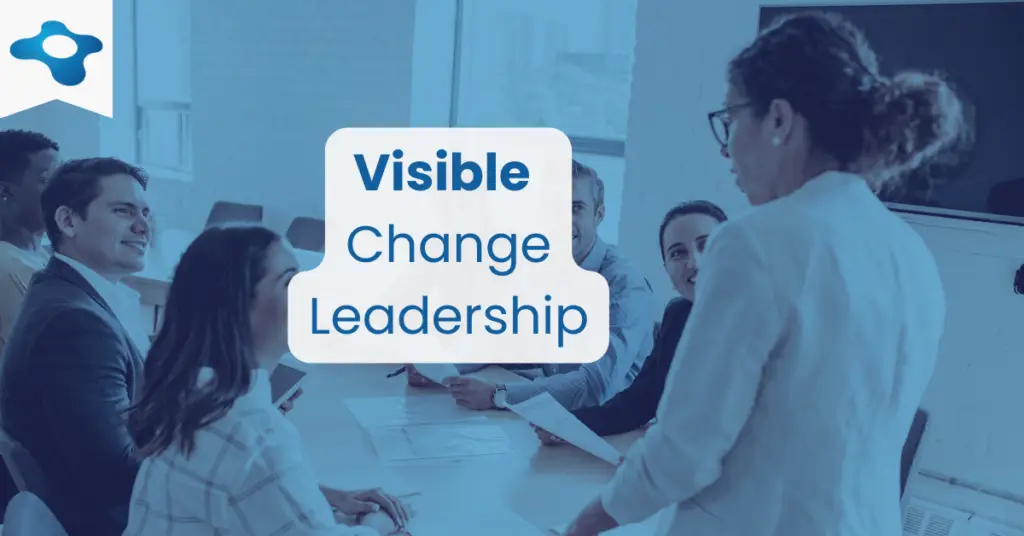
This best practice area highlights the importance of developing and supporting change leaders who can communicate, inspire, and drive the change process.
Develop Change Leaders
Benefits of developing change leaders:
Skilled change leaders inspire and motivate employees, enabling smoother transitions and improved organizational performance.
Risks of not developing change leaders:
In the absence of strong change leadership, employee resistance and disengagement may increase, jeopardizing the success of the change initiative.
Steps to develop change leaders:
- Define change leadership needs
- Assess current leadership and evaluate gap
- Develop change leadership activity plans
- Evaluate change leadership effectiveness
Find out more about developing change leaders here.
Support Change Leaders
Benefits of supporting change leaders:
Providing support and resources to change leaders empowers them to perform their roles effectively, ensuring that change initiatives are executed smoothly and successfully.
Risks of not supporting change leaders:
Without adequate support, change leaders may struggle to manage the complexities of the change process, leading to delays, increased resistance, and reduced morale.
Steps to support change leaders:
- Review change leadership development plans
- Coach for change leadership
- Evaluate change leader effectiveness
- Offer change leader feedback
Find out more about supporting change leaders here.
Incorporating proven change management models and methodologies can further enhance the effectiveness of your change leaders, providing them with structured approaches to navigate complex change scenarios.
Smart Engagement and Communication
Effective communication and engagement with stakeholders are critical to the success of any change initiative.

This best practice area focuses on the importance of understanding stakeholders, building a change agent network, and ensuring transparent communication throughout the change process
Stakeholder Analysis
Benefits of conducting stakeholder analysis:
Identifying and understanding the needs, expectations, and concerns of stakeholders enables tailored communication and engagement strategies. This ensures stakeholder buy-in and minimizes resistance to change.
Risks of ignoring stakeholder analysis:
Lack of stakeholder analysis may lead to unaddressed concerns, disengagement, and resistance, which can undermine the success of change initiatives.
Steps to conduct a stakeholder analysis:
- Identify and classify key stakeholders
- Investigate stakeholder influence and commitment
- Map current and desired stakeholder commitment
- Establish stakeholder management plan
Find out more about conducting a thorough stakeholder analysis here.
Build Change Agent Network
Benefits of building a change agent network:
Change agents play a crucial role in facilitating change by acting as liaisons between the organization and stakeholders. They help to drive and sustain change by promoting the change vision, addressing concerns, and providing support.
Risks of not building a change agent network:
Without a change agent network, change initiatives may face increased resistance and disengagement, leading to a slower and less effective change process.
Steps to build a change agent network:
- Assess change agent network requirements
- Design and deliver change agent network training
- Co-ordinate ongoing change agent network activities
- Evaluate effectiveness of change agent network
Discover more about building an effective change agent network here.
Stakeholder Communication
Benefits of effective stakeholder communication:
Transparent, consistent, and targeted communication fosters stakeholder buy-in, trust, and support for the change initiative, reducing resistance and increasing the likelihood of success.
Risks of ineffective stakeholder communication:
Poor communication can result in confusion, mistrust, and resistance among stakeholders, hindering the progress and success of change initiatives.
Steps to ensure effective stakeholder communication:
- Develop stakeholder communication strategy
- Define stakeholder communication plan
- Deliver stakeholder communications
- Evaluate stakeholder communication effectiveness
Learn more about designing and delivering effective stakeholder communication here.
To enhance the effectiveness of your stakeholder communication efforts, explore our comprehensive collection of change management tools and templates that can streamline the process and improve your overall communication strategy.
Strong Individual Performance
A change initiative’s success is also highly dependent on the performance of individuals within the organization. Ensuring that employees have the necessary skills, knowledge, and support to adapt to new processes and ways of working is vital for achieving lasting change.

The processes below contribute to strong individual performance during a change initiative.
Knowledge and Skill Assessment
Benefits of conducting knowledge and skill assessments:
Identifying the existing skill sets and knowledge gaps within the organization enables targeted training and development efforts. This ensures that employees are well-prepared for the changes, leading to smoother transitions and higher engagement.
Risks of ignoring knowledge and skill assessments:
Without proper assessments, training efforts may be misaligned or inadequate, resulting in confusion and resistance among employees, ultimately hindering the success of the change initiative.
Steps to conduct a knowledge and skill assessment:
- Define future skills requirement
- Design and deliver current skills assessment
- Conduct skills gap analysis
- Prepare skills development plan
Find out more about conducting an effective knowledge and skill assessment here.
Effective Performance Management
Benefits of effective performance management:
Performance management systems that align with the change initiative help reinforce desired behaviors and outcomes. By setting clear expectations and providing regular feedback, organizations can drive employee engagement and performance.
Risks of ineffective performance management:
A lack of alignment between performance management and the change initiative can lead to confusion, disengagement, and resistance among employees, ultimately undermining the change effort.
Steps to implement effective performance management:
- Define future performance objectives
- Review current performance framework
- Align performance framework with new objectives
- Align job and team descriptions with new framework
Learn more about effective performance management here.
Effective Talent Management
Benefits of effective talent management:
Talent management practices that support the change initiative ensure that the right people are in the right roles, enhancing the organization’s ability to achieve its objectives.
Risks of ignoring talent management:
Inadequate talent management practices can result in a misalignment between organizational needs and employee capabilities, leading to increased resistance and decreased performance.
Steps to implement effective talent management:
- Determine future talent requirements
- Review current talent pool
- Develop and deliver talent management plan
- Retain top talent and ensure succession planning
Learn more about effective talent management here.
Effective Training and Knowledge Management
Benefits of effective training and knowledge management:
Providing targeted training and effectively managing knowledge throughout the change process ensures that employees have the skills and information needed to successfully adapt to new ways of working.
Risks of inadequate training and knowledge management:
Poor training and knowledge management practices can lead to confusion, frustration, and resistance among employees, ultimately hindering the success of the change initiative.
Steps to implement effective training and knowledge management:
- Conduct training and knowledge needs analysis
- Develop training and knowledge strategy
- Design and develop training and knowledge solution
- Deploy solution and evaluate effectiveness
Learn more about effective training and knowledge management here.
To further support the implementation of effective training and knowledge management, explore our comprehensive collection of change management tools and templates that can help streamline and optimize your efforts.
Supportive Organization and Culture
An organization’s structure and culture play significant roles in determining the success of change initiatives. In this section, we will explore how aligning business processes, preparing and implementing organization design, analyzing culture change, and creating behavior change plans contribute to a supportive organization and culture for change.
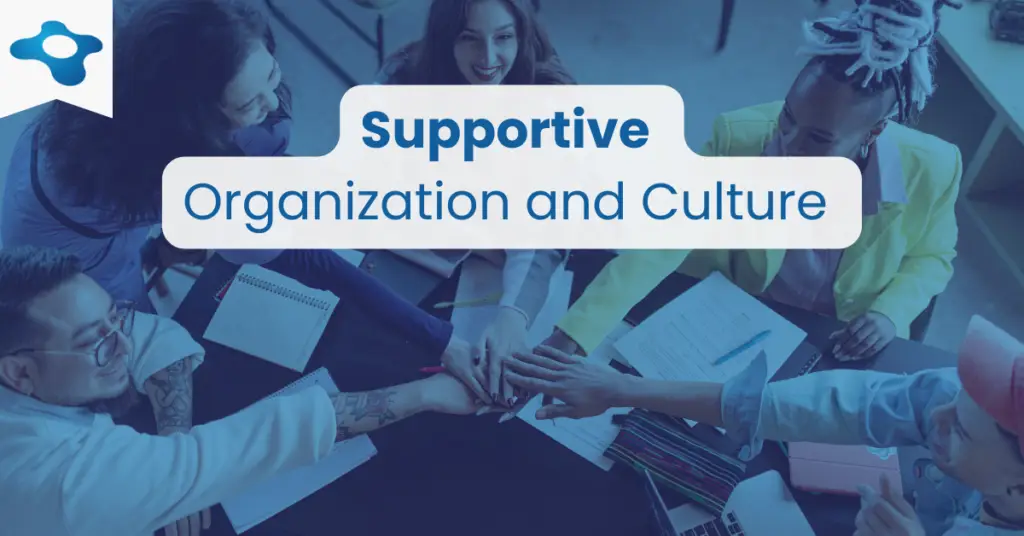
Business Process Alignment
Benefits of aligning business processes:
Aligning business processes with the desired change outcomes ensures seamless integration of change initiatives into the organization’s day-to-day operations. It also promotes efficiency, reduces redundancy, and facilitates a smoother transition.
Risks of not aligning business processes:
Misaligned processes can hinder the success of change initiatives, leading to confusion, resistance, and inefficiencies.
Steps to align business processes:
- Review future state definition
- Document or review future state process design
- Conduct process-to-role mapping
- Create role profiles
Learn more about ensuring business process alignment here.
Prepare Organization Design
Benefits of preparing organization design:
A well-prepared organization design ensures that the new structure supports the change objectives, fosters collaboration, and promotes adaptability.
Risks of not preparing organization design:
Failing to prepare the organization design can lead to misaligned structures, poor collaboration, and an inability to respond effectively to future changes.
Steps to prepare organization design:
- Agree organization design principles
- Design organization structure
- Define roles, jobs and teams
- Estimate organization size
Discover more about preparing the organization’s design for the new way of working.
Implement Organization Design
Benefits of implementing organization design:
Successful implementation of the new organization design ensures alignment with the change objectives and creates a foundation for improved performance and adaptability.
Risks of not implementing organization design:
Without proper implementation, the organization may face resistance, confusion, and inefficiencies, ultimately hindering the success of the change initiative.
Steps to implement organization design:
- Review deployment approach
- Confirm Full Time Equivalent(FTE) requirements
- Develop organization transition plan
- Develop additional material and support transition
Learn more about how to implement a new organization design that supports the change initiative.
Culture Change Analysis
Benefits of conducting a culture change analysis:
Understanding the current organizational culture and identifying necessary changes helps to foster a supportive environment for change and improve overall performance.
Risks of not conducting a culture change analysis:
Ignoring culture change analysis may lead to resistance, disengagement, and a lack of alignment between the desired change outcomes and the prevailing organizational culture.
Steps to conduct a culture change analysis:
- Review Future State Vision and Change Impact Assessment
- Identify desired cultural attributes
- Identify capabilities that define desired behaviors
- Agree values and behaviors that support change
Discover more on conducting culture change analysis here.
Behavior Change Plan
Benefits of creating a behavior change plan:
A behavior change plan helps to reinforce desired behaviors, fosters commitment to the change objectives, and drives sustainable change.
Risks of not creating a behavior change plan:
Lack of a behavior change plan can lead to resistance, disengagement, and an inability to sustain the desired change outcomes.
Steps to create a behavior change plan:
- Identify behavioral changes required
- Assess current situation and identify gap
- Plan behavior change interventions
- Monitor behavior change progress
Discover how to create a behavior change plan to support your change project here.
For a comprehensive set of tools to help support organizational culture and behavior change, have a look at our article on change management tools and templates to find resources tailored for your needs.
Meaningful Change Measurement
The importance of measuring change progress and success cannot be overstated. By utilizing measurement to inform decision-making and ensure readiness, organizations are better equipped to navigate the complexities of change.
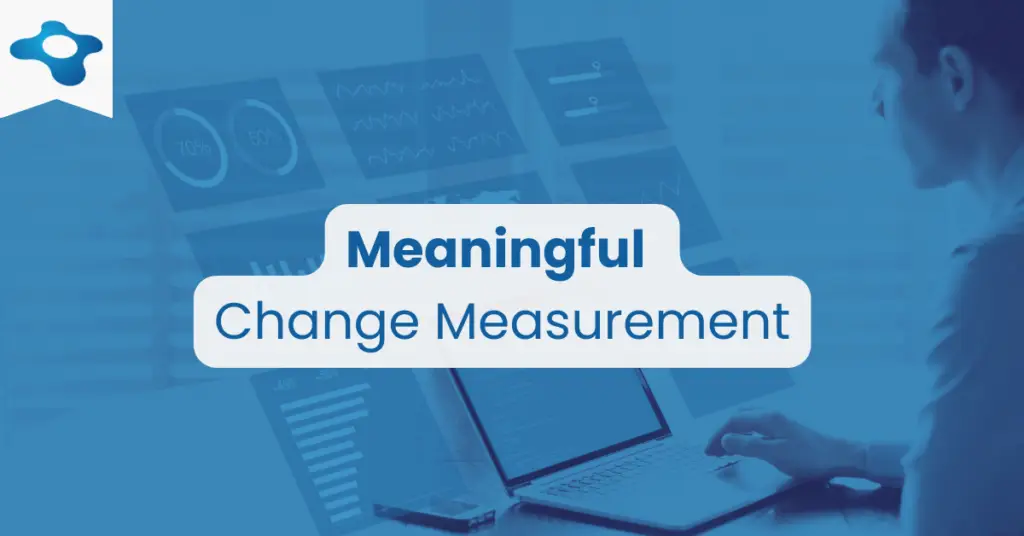
The processes below explore the critical processes of change measurement and business readiness assessment.
Change Measurement
Benefits of change measurement:
Change measurement enables informed decision-making, clear progress tracking, and increased accountability, ultimately contributing to the success of the change initiative.
Risks of not measuring change:
Without change measurement, organizations may face uninformed decision-making, lack of progress tracking, and decreased accountability, which can hinder the success of the change initiative.
Steps in the change measurement process:
- Define change measurement plan
- Develop change measurement tool
- Measure, establish baseline and repeat through project
- Identify actions to support change effort
Discover more on how to measure change progress here.
To better understand how change measurement can be integrated into various change management models and methodologies, read our article on change management models and methodologies.
Business Readiness
Benefits of assessing business readiness:
Assessing business readiness leads to a prepared organization, increased change adoption, and reduced resistance, ensuring a smoother transition during the change process.
Risks of not assessing business readiness:
Failing to assess business readiness may result in an unprepared organization, slow change adoption, and increased resistance, making it difficult to achieve the desired change outcomes.
Steps in the business readiness process:
- Define readiness criteria and approach
- Develop readiness assessment tools
- Track readiness and identify areas for support
- Confirm readiness and transition arrangements
Find out more about assessing business readiness here.
For a deeper dive into the change management process and how business readiness plays a crucial role, explore our article on the change management process.
FAQ on Change Management Best Practices
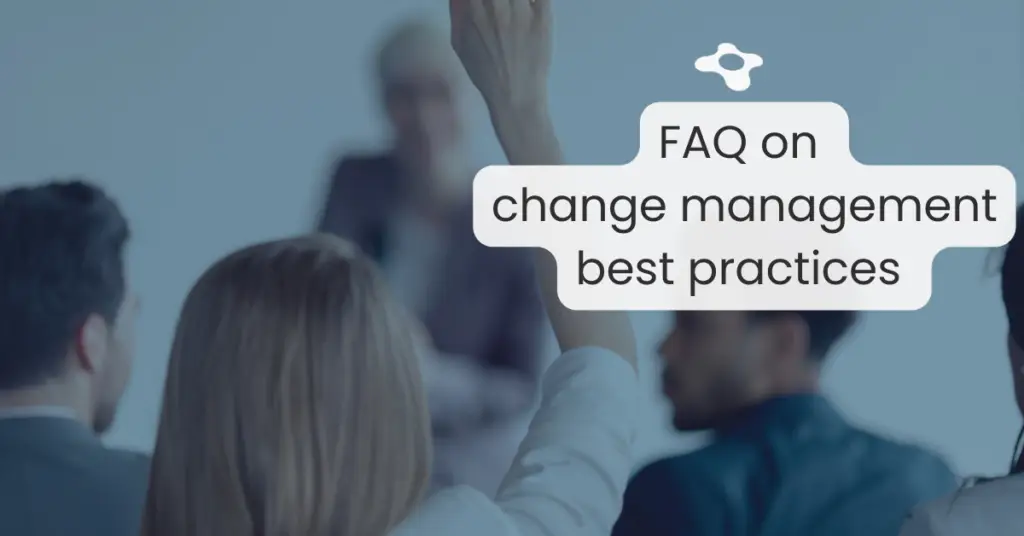
What are change management best practices?
Change management best practices are proven guidelines or standards that, when implemented during organizational change initiatives, help organizations navigate change complexities, reduce resistance and increase the likelihood of achieving desired results.
What are the six key areas of change management best practices
Changemethod’s meta-study pinpointed six key areas of change management best practices: shared change purpose, visible change leadership, smart engagement and communication, strong individual performance, supportive organization and culture and meaningful change measurement.
These areas encompass crucial aspects of change management, ranging from leadership and communication to performance and measurement.
What are the main challenges in implementing change management best practices across an organization?
Key challenges in implementing change management best practices include overcoming resistance to change, securing stakeholder buy-in, ensuring effective communication and engagement, allocating suitable resources and maintaining momentum throughout the change process.
Organizations may also encounter challenges adapting best practices to their unique contexts and integrating change management with other organizational initiatives.
What are the benefits of integrating change management with project management?
Integrating change management with project management fosters more successful change initiatives by enabling a holistic approach to managing change.
Aligning project goals with change objectives ensures both aspects are considered throughout the project lifecycle. This integration yields benefits such as improved communication, better resource allocation, increased stakeholder buy-in and a higher likelihood of achieving desired outcomes.
How can organizations address potential resistance to change initiatives?
To address resistance to change initiatives, organizations should proactively engage stakeholders, understand their concerns and address those concerns through effective communication and involvement.
Building trust and demonstrating the change’s value to individuals and the organization as a whole helps reduce resistance. Furthermore, providing employees with training, resources, and support during the change process cultivates a sense of ownership and dedication to the change initiative.

